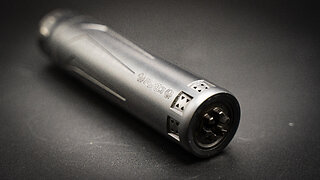Premium Only Content

Why You Want 2-1B to Operate on You (Robotics in Surgery)
Real a look at where robotics will take us in surgery, both from a standpoint of precision, and opportunity, but also jobs, career paths for doctors, and liability issues (what happens if a robot fails?)
2-1B surgical robot:
This medical droid provides Luke with a cybernetic hand in Episode V: The Empire Strikes Back. Like many Star Wars automatons, it’s utilitarian-looking, with manipulators, long arms, and hoses.
Intuitive Surgical Inc.’s da Vinci is the leading surgical robot on the market, and it also features long arms.
Robotic surgery, also called robot-assisted surgery, allows doctors to perform many types of complex procedures with more precision, flexibility and control than is possible with conventional techniques. Robotic surgery is usually associated with minimally invasive surgery — procedures performed through tiny incisions. It is also sometimes used in certain traditional open surgical procedures.
The most widely used clinical robotic surgical system includes a camera arm and mechanical arms with surgical instruments attached to them. The surgeon controls the arms while seated at a computer console near the operating table. The console gives the surgeon a high-definition, magnified, 3D view of the surgical site. The surgeon leads other team members who assist during the operation.
-
 LIVE
LIVE
Chicks On The Right
2 hours agoTrump Cabinet shake-up, Kamala keeps humiliating herself, FIREWORKS on CNN
1,134 watching -
 LIVE
LIVE
LFA TV
10 hours agoALL DAY LIVE STREAM - FRIDAY 5/2/25
5,638 watching -
 LIVE
LIVE
Game On!
11 hours agoTom Brady continues to laugh at the 'Brady vs Belichick' debate!
13,746 watching -
 LIVE
LIVE
BEK TV
23 hours agoTrent Loos in the Morning 5/2/2025
4,628 watching -
 8:00
8:00
SKAP ATTACK
16 hours ago $0.98 earnedChoke GOAT: The LeBron James Story
7.98K11 -
 17:24
17:24
Tactical Considerations
13 hours ago $0.73 earnedIs The Ruger RXM Worth Your Money in 2025?
4.33K3 -
 3:34
3:34
The Official Steve Harvey
17 hours ago $0.81 earnedCelebrity LOLs: Behind-the-Scenes Laughs and Unfiltered Moments with Your Favorite Stars!
4.9K2 -
 8:06
8:06
ariellescarcella
1 day ago"Be Queer, Do Crime" : How About NO
5.08K6 -
 4:31
4:31
The Shannon Joy Show
14 hours ago💣Economic Detonation! Is Trump Making It Worse_ Prepare NOW!
5.26K6 -
 9:51
9:51
Alabama Arsenal
12 hours ago $0.26 earnedRXD30Ti
4.83K1